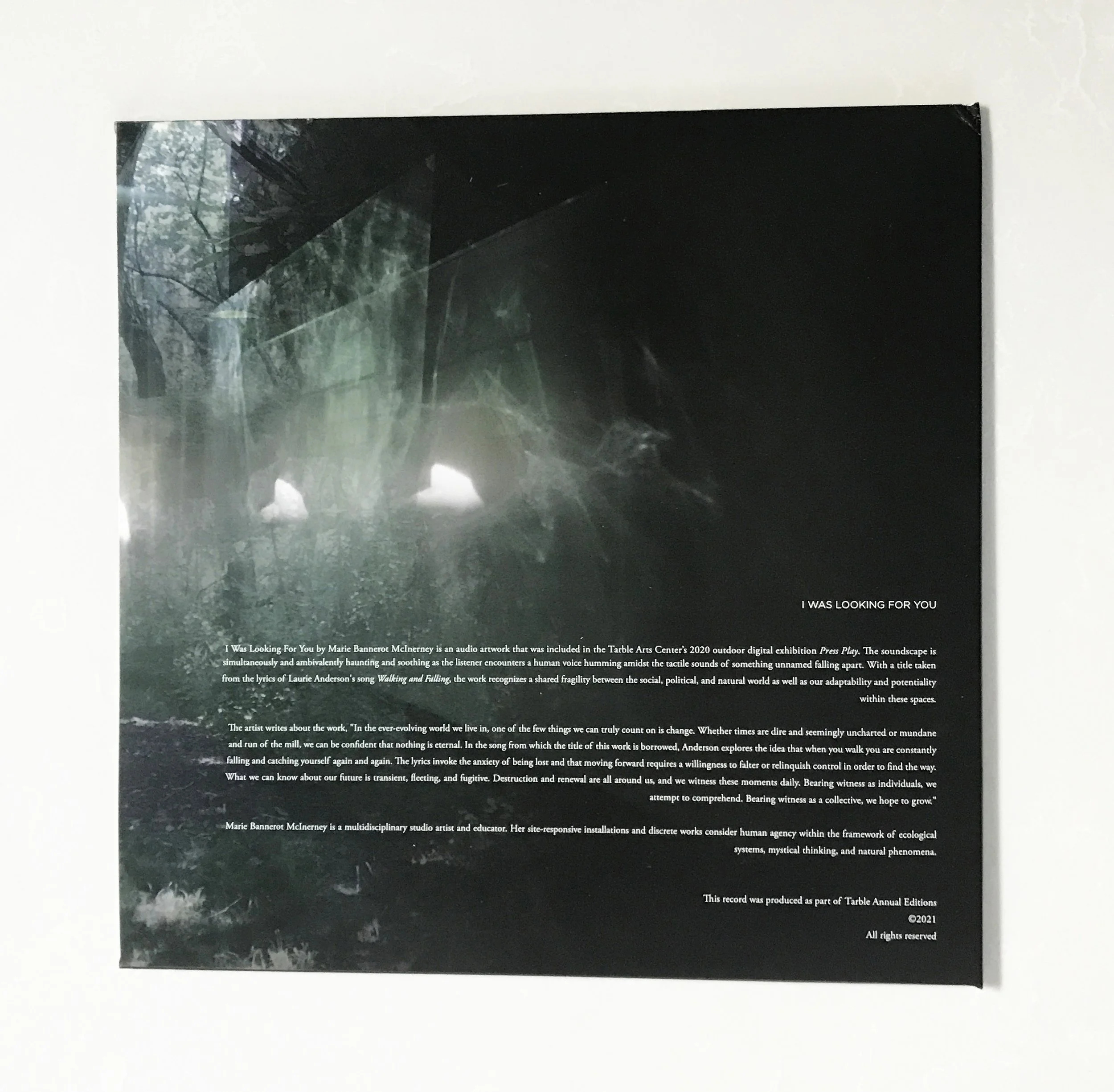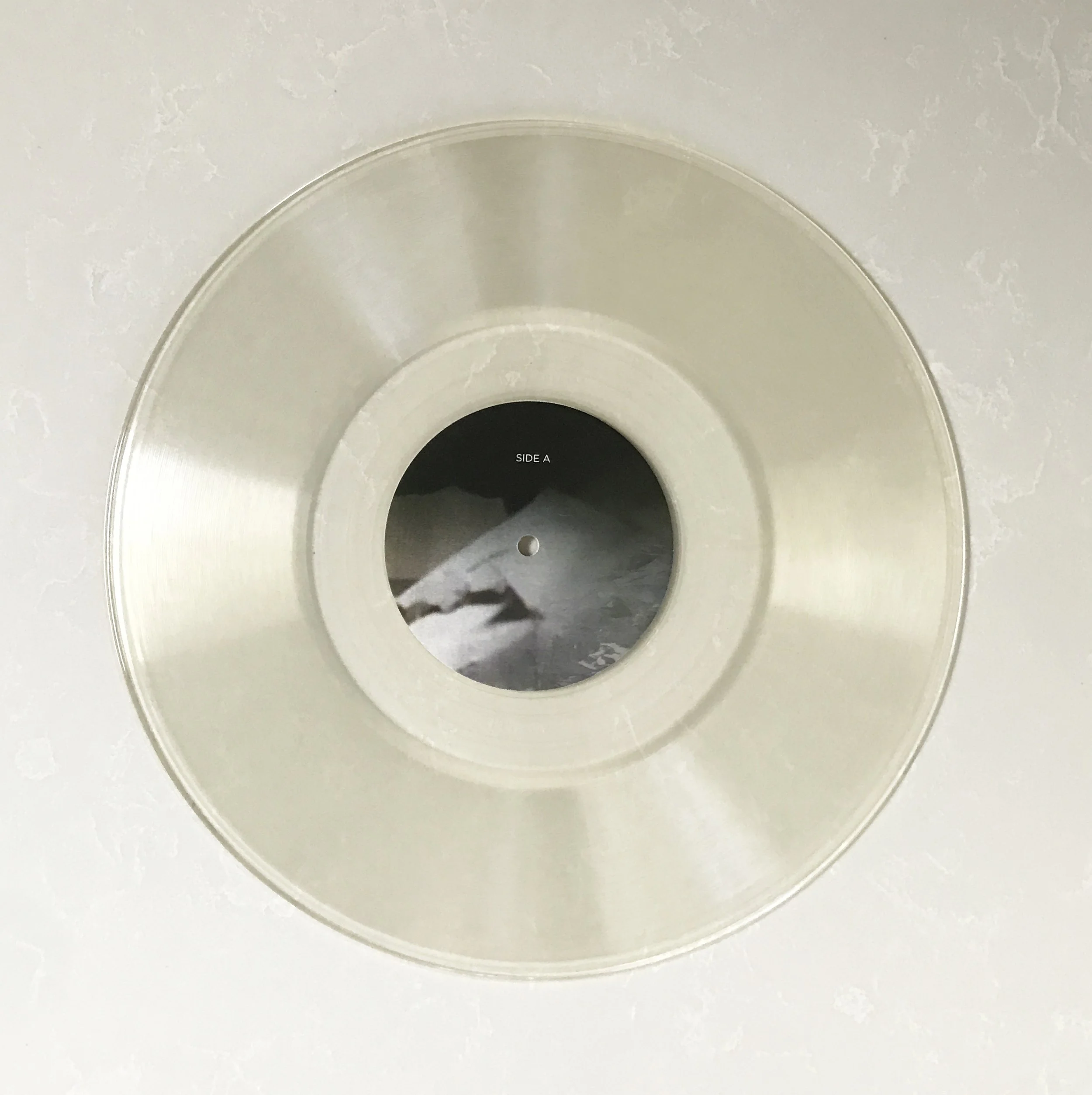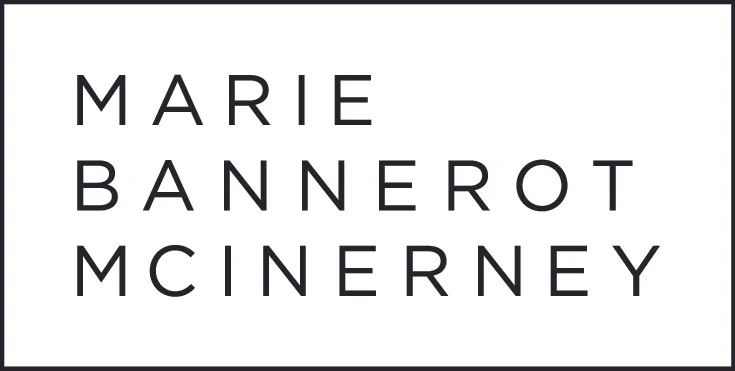
I Was Looking For You




I Was Looking For You | 12:44
I Was Looking For You by Marie Bannerot McInerney is an audio artwork that was included in the Table Art Center’s 2020 outdoor digital exhibition Press Play. The soundscape is simultaneously and ambivalently haunting and soothing as the listener encounters a human voice humming amidst the tactile sounds of something unnamed falling apart. With the title taken from the lyrics of Laurie Anderson’s song Walking and Falling, the work recognizes a shared fragility between the social, political and natural world as well as our adaptability and potentiality within these spaces.
The artist writes about the work, “In the ever-evolving world we live in, one of the few things we can truly count on is change. Whether times are dire and seemingly uncharted or mundane and run of the mill, we can be confident that nothing is eternal. In the song from which the title of the work is borrowed, Anderson explores the idea that when you walk you are constantly falling and catching yourself again and again. The lyrics invoke the anxiety of being lost and that moving forward requires a willingness to falter or relinquish control in order to find the way. What we can know about our future is transient, fleeting and fugitive. Destruction and renewal are all around us, and we witness these moments daily. Bearing witness as individuals, we attempt to comprehend. Bearing witness as a collective, we hope to grow. “
Studio Visit w/ Marie Bannerot McInerney | published in the Tarble Times 2021/2022
Artist Spotlight with Marie Bannerot McInerney
"I Was Looking For You" by Marie Bannerot McInerney is an audio artwork that was included in last year’s outdoor digital exhibition "Press Play." The soundscape is simultaneously and ambivalently haunting and soothing as the listener encounters a human voice humming amidst the tactile sounds of something unnamed falling apart. With a title taken from the lyrics of Laurie Anderson's "Walking and Falling," the work recognizes a shared fragility between the social, political, and natural world as well as our adaptability and potentiality within these spaces. We have invited McInerney to inaugurate the Tarble’s new Annual Editions program, in which top-tier Tarble members receive an artwork from one of our exhibiting artists. Tarble director, Jennifer Seas, recently sat down to discuss the new project with the artist.
JS: What does your studio practice look like?
MBM: I am a responsive material-based maker. What I mean by that is that I have to explore with my hands. I need to devise material strategies (putting strange materials and forms together) and test them to see if they are interesting and if they create inspiring arrangements and interactions. I would say that my hands and my tests access my subconscious in ways that are revealing. I learn from myself when working in this way. I see things I am thinking about and experiencing in the world begin to appear in the work without a directed formula in mind.
My studio practice is about placing myself in relationship to larger systems, be they earthly or celestial. Working in the context of the scale of the sublime is at once comforting and terrifying. There is comfort in knowing that there are larger systems always at work—systems that have been here millions or even billions of years before me and will be here for much longer. I am comforted by knowing that I am connected to these enormous networks, while at the same time I feel aware that I am a small insignificant speck within this vast scale of existence. I am matter, but do I matter?
JS: How did this project begin?
MBM: The sound piece, I Was Looking for You, began about 10 years ago with material exploration in my studio using plaster and balloons. I filled balloons partially with plaster, blew them up, tied them, and then rolled them around to cover the interior. Then I poured plaster over the outside of the balloons to coat their surface. As these forms dried, I could hear them crack and pop with the tension created between the shrinking and increasingly brittle drying plaster skins and the stretched latex. The noises they made were intriguing—they reminded me of ice cracking. The tempo of the sound of the objects breaking down became more and more urgent, as though the tension between the materials had reached a tipping point.. I began to think of these objects as little experiments in precarity and instability. They quickly became metaphors for everyday imbalances and the threat of climate change. With this in mind, I began recording the sounds created by these sculptural experiments. I also recorded and added layers of a humming voice to suggest methods of self-soothing.
JS: Can you describe how this project continues to evolve?
MBM: It was cathartic to revisit this work during the summer of 2020 when the world was experiencing the shared trauma of the coronavirus pandemic. I reimagined and titled the work in response to the new context of being installed outdoors, along a walking path, during a time when the world was experiencing the extreme tension of a global pandemic. The title, I Was Looking for You, is borrowed from the lyrics of a Laurie Anderson song, Walking and Falling. Anderson explores the idea that when you walk you are constantly falling and catching yourself again and again. I wanted to invoke this general idea about embodiment, but also suggest looking for someone and then finding them and sharing something with them. There is something hopeful and beautiful to me in the undercurrent of anxiety that accompanies being lost and looking for someone or something to connect with.
The project is coming full circle as I imagine the work as an object again. I am designing and pressing a vinyl record with the recording of this piece for your Annual Editions project. One side of the record is the original sound piece, I Was Looking for You, while the other side is the aural experience of listening to the work while walking along an outdoor path. The sound overlays the rhythm and pace of footsteps set against birds, insects and frogs. The recordings for this work are all bound to our material reality while the voice lends a dreamlike quality. Through the cover art design I am working to capture a bit of that fantasy. I have been creating photographic hybrid landscapes that combine stills from the original installation informed by the plaster objects with scenes from nature. The resulting images access the conceptual atmosphere of the work. I want my work to retain a sense of wonder and mysticism within the framework of what is real.
Special thanks to Producer and Sonic Collaborator Bill Reiter for his work on recording the voice
